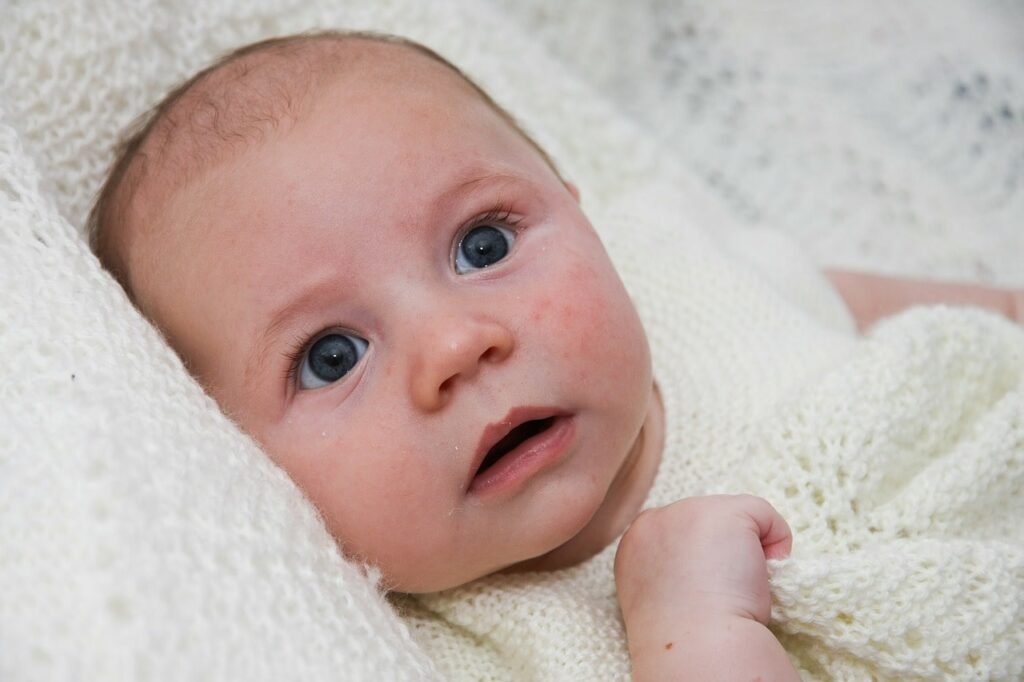
Baby spitting is not rare, and perhaps most infants would spit now and then. In fact, half of all babies might spit up quite frequently. Although, in most such cases amount of spitting would be pretty small.
Like in many other issues related to these age groups, it is normal in most cases and is just a result of certain reflexes, poorly trained bodies.
Baby spitting is a normal physiological phenomenon in most infants. However, in about 1% of cases, it may indicate some underlying disorder, a cause to worry and seek medical attention.
In most babies’ things will keep improving with age, especially after 12 months of age. Baby spitting will also reduce once a child has mastered the art of sitting well.
Nevertheless, in a small number of cases spitting may be a cause of concern, especially when it occurs too frequently, volumes are large, and spit-ups have a specific color. It may indicate GERD, pyloric stenosis, and even bowel obstruction.
What is normal baby spitting?
As baby spitting may sometimes indicate some health problems, it is necessary to know what is normal and whatnot. Normal spitting is an involuntary action. However, in normal spitting volume of spit-ups is relatively small, from one to two mouthfuls. Therefore, spitting may contain just saliva and may seem like drooling, and it may also contain stomach content, especially after feeding.
Baby spitting is frequent at certain times
 Experience shows that baby spitting is more common among infants. It starts few weeks after birth and drastically decreases after the first birthday. It mainly occurs after feeding and may be yellow in color due to colostrum or milk spit-up.
Experience shows that baby spitting is more common among infants. It starts few weeks after birth and drastically decreases after the first birthday. It mainly occurs after feeding and may be yellow in color due to colostrum or milk spit-up.
Spitting in the first year of age is normal. It occurs mainly due to the immaturity of the sphincter located between the stomach and esophagus. However, as a child grows, this sphincter becomes more muscular, and spitting stops. Therefore, it would be correct to say that stopping spitting is one of the developmental milestones, quite like walking or teething.
In some infants or children, there could be other causes of spitting, like aerophagia, a condition in which a child consumes a greater amount of air than usual. In addition, too frequent spitting may happen in those with an over-sensitive stomach.
One may reduce baby spitting by using some simple methods:
- Avoid overfeeding and also ensure to feed smaller amounts (only for babies older than one month). The baby’s stomach is quite tiny, and overfilling of the stomach is one of the significant causes of spitting.
- Keeping a wait time of about 2 to 2 and a half hour ensures that the stomach is empty when feeding next time, thus reducing spitting frequency.
- Do not interrupt burping as it ensures that air in the stomach is removed. Instead, teach a baby to take pauses for burping while feeding.
- Holding a child in an upright position for 15-20 minutes may help.
- Also, try to reduce sucking time, as prolonged sucking habits may result in greater air swallowing and increase the chances of baby spitting.
- Ensure that clothing or diapers are not too tight, as it may put unnecessary pressure on the stomach.
- Avoid playing vigorously immediately after feeding.
Differentiate between baby spitting and vomit
It is essential to differentiate between the two, as spitting is normal in most infants, but not vomiting. Vomiting differs in a way that it has much greater force, higher volume and makes the baby highly uncomfortable. Vomiting makes a baby look sick, cry, lose body weight. Vomiting requires medical attention as it may indicate some severe issues.
When might baby spitting be a reason to worry?
Baby spitting is normal, but not in all cases. In some instances, it might indicate a more severe problem. Always seek medical attention if:
- Baby starts losing body weight
- The baby is highly uncomfortable and cries after spitting
- Liquid coming out has a peculiar smell, color, or texture like bile green, deep yellow, or red
- Crying without tears
- Dry mouth and sunken eyes
 In less than 1% of cases, baby spitting may be due to a more severe underlying condition. For example, it could be due to GERD, intestinal obstruction, pyloric stenosis. Such issues like bowel obstruction require urgent medical treatment [1].
In less than 1% of cases, baby spitting may be due to a more severe underlying condition. For example, it could be due to GERD, intestinal obstruction, pyloric stenosis. Such issues like bowel obstruction require urgent medical treatment [1].
Acid reflux quite commonly results in yellow color spitting, as it is not a very serious condition. Nevertheless, in some cases, spitting may be too severe and may include bile.
In rare cases, a higher amount of spitting may be due to some viral infection. Viral or bacterial infections are more prevalent in certain parts of the world.
Conclusion
To conclude, baby-spitting in small amounts should not be the cause to worry. Yellow color spitting is not uncommon. However, this spitting is more common in children aged one month to 12 months. In other age groups, even small amounts of spitting may be a cause of concern.
Further, it is vital to look for red signs as in 1% of cases, baby-spitting may indicate severe health issues requiring medical attention. Pay particular attention to the volume and color of spitting. Also, ensure that there are no signs of dehydration. Too much discomfort after baby spitting must raise some fears.
References
- Page-Goertz SS, Stewart DR. Is the Baby Just Spitting? Consideration of the Gastroesophageal Reflux. Issues in Comprehensive Pediatric Nursing. 1980;4(2):53-66. doi:10.3109/01460868009040495




 Dr. Preet Pal SB is a physician (M.D. Medicine) with a specialization in diabetes (Fellowship in diabetes, Royal Liverpool Academy). He has a particular interest in metabolic disorders, considering that they are rising in every corner of the world, more so in India.
Dr. Preet Pal SB is a physician (M.D. Medicine) with a specialization in diabetes (Fellowship in diabetes, Royal Liverpool Academy). He has a particular interest in metabolic disorders, considering that they are rising in every corner of the world, more so in India.